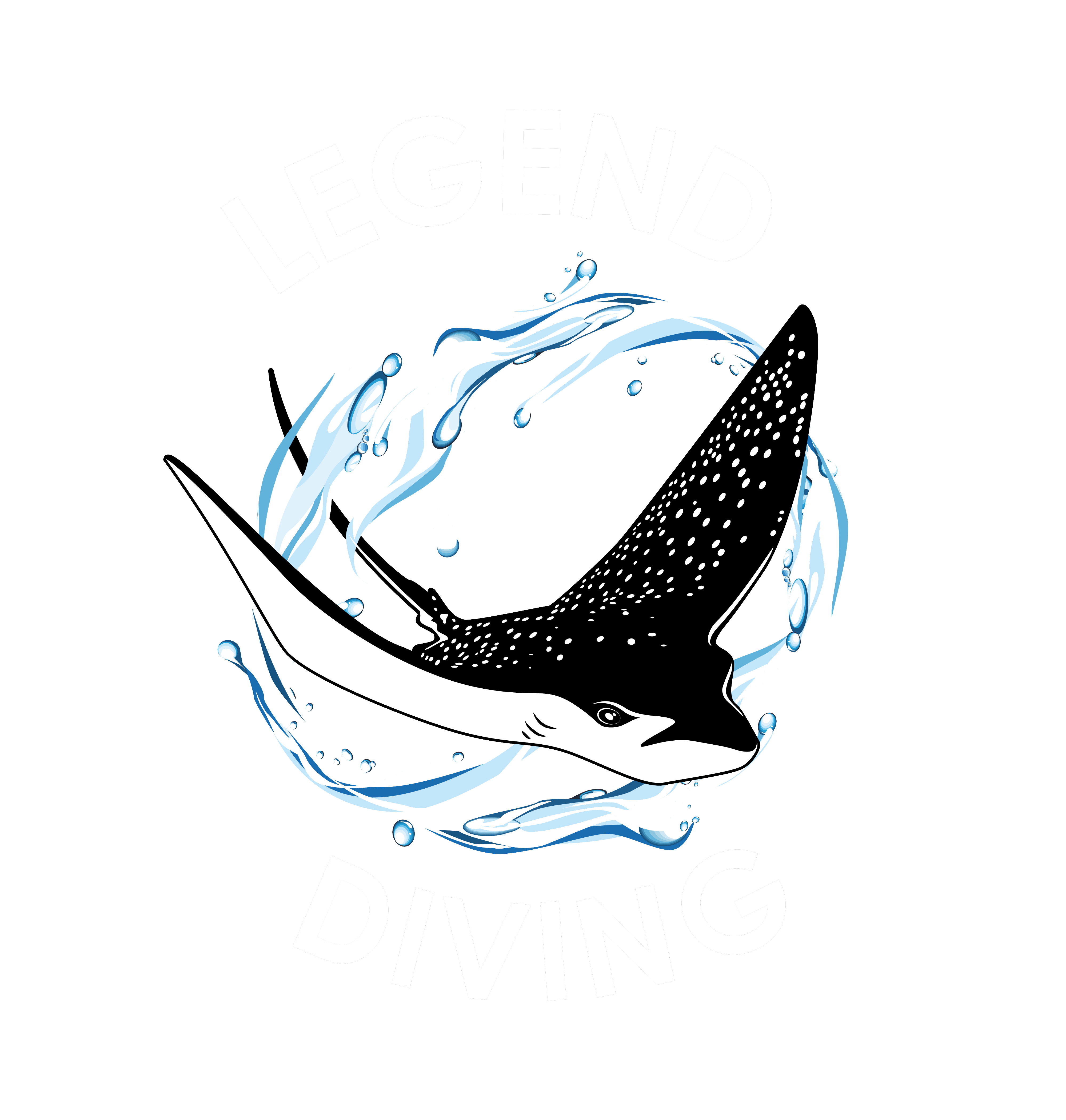Fun Dives
Dive in the Richest Area of Marine Biodiversity in the World
Fun Dives
Dive in the Richest Area of Marine Biodiversity in the World
IDR 845,000
IDR 845,000
Year-round daily trips
ONBOARD
Emergency Oxygen,
Life Vests, First Aid Kit

ONBOARD
Emergency Oxygen,
Life Vests, First Aid Kit
MEALS & DRINKS
Lunch, Free Flow Water,
Tea, Coffee, Fruit

MEALS & DRINKS
Lunch, Free Flow Water,
Tea, Coffee, Fruit
OUR SERVICE
Small group of 4 divers
Professional Instructors

OUR SERVICES
Small group of 4 divers
Professional Instructors

RENTAL
Full Set Of Equipment
RENTAL
Full Set Of Equipment
Dive into Adventure
Best Time of The Year to Dive Nusa Penida
Scuba diving in the marine sanctuary of Nusa Penida Diving is an experience you’ll never forget! The visibility is superb, often more than 30m, and the coral reefs that cover the deep walls and bays of Nusa Penida are simply pristine. Due to the location of these islands between Bali and Lombok, the Nusa Penida currents can be quite strong,
reaching to more than 4knots and sometimes with down-currents. Our professional, experienced team of PADI Divemasters and PADI instructors will guide you carefully through these currents providing you with opportunities for some fantastic drift diving. Although some of the most challenging dive sites are reserved for experienced divers, there are still many protected, amazing bays around Nusa Penida and Nusa Lembongan for novice divers and snorkelers. The rich biodiversity of the area will amaze divers of any level or experience. All of these sites are only a short 10 to 45-minute boat ride away from our dive center.
You can SCUBA dive Nusa Penida any time of the year. However, there are certain times of the year with comparatively better conditions. The rainy season lasts from November to March, though the peak lasts only from January to February. Tropical rains usually last only a few hours in the morning or afternoon, though there is an occasional storm here and there. November to May has the calmest seas, for those who are worried about getting seasick when SCUBA diving Nusa Penida. For those seeking out the majestic Manta ray, you’re in luck- they can be seen all year round! Those looking for the unusual Mola mola have the highest chance of finding them from July to October. Water temperature can vary greatly, ranging from a comfortable 28-26 °C down to a chilly 16 °C due to upwellings from the deep! With this in mind, It is recommended that you wear a 5mm wetsuit and hood to keep you warm!

ONBOARD
Emergency Oxygen, Life Vest, First Aid Kit

MEALS & DRINKS
Free Flow Water, Tea, Coffee, Fruit

OUR SERVICES
Professional PADI Guide

ADDITIONAL
Fullset of Equipment
Dive into Adventure
Best Time of The Year to Dive Nusa Penida
Scuba diving in the marine sanctuary of Nusa Penida Diving is an experience you’ll never forget! The visibility is superb, often more than 30m, and the coral reefs that cover the deep walls and bays of Nusa Penida are simply pristine. Due to the location of these islands, between Bali and Lombok, the Nusa Penida currents can be quite strong,
reaching to more than 4knots and sometimes with down-currents. Our professional, experienced team of Padi Divemasters and Padi Instructors will guide you carefully through these currents providing you with opportunities for some fantastic drift diving. Although some of the most challenging dive sites are reserved for experienced divers, there are still many protected, amazing bays around Nusa Penida and Nusa Lembongan for novice divers and snorkelers. The rich biodiversity of the area will amaze all diver’s level and experience. All of these sites are only a short 10-45 minute boat ride away from our dive center.
You can scuba dive Nusa Penida any time of the year. However, there are certain times of the year with comparatively better conditions. The rainy season lasts from November to March, though the peak lasts only from January to February. Tropical rains usually last only a few hours in the morning or afternoon, though there is an occasional storm here and there. November to May has the calmest seas, for those who are worried about getting seasick when scuba diving Nusa Penida. For those seeking out the majestic Manta ray, you’re in luck- they can be seen all year round! Those looking for the unusual Mola mola have the highest chance of finding them from July to October. Water temperature can greatly vary. Diving here can be a comfortable 28-26 °C. However, due to upwellings from the deep, certain dive sites may dip down to 16 °C! It is recommended that you wear a 5mm wetsuit and hood to keep you warm.

ONBOARD
Emergency Oxygen, Life Vest, First Aid Kit

MEALS & DRINKS
Free Flow Water, Tea, Coffee, Fruit

OUR SERVICES
Professional PADI Guide

ADDITIONAL
Fullset of Equipment
Nusa Penida’s Underwater World
Nusa Penida Diving & Marine Life
You can expect to find an extraordinary wealth of biodiversity when you decide to dive Nusa Penida. This 200 km² area off the southeast coast of Bali is prone to strong current, which brings in nutrients that shape this underwater paradise.
MOLA MOLA
When you mention Nusa Penida diving to experienced scuba divers, the first thing that comes to mind is probably Mola mola.
We are home to the best place in the world to spot this enormous and peculiar fish. Also known as the Giant sunfish, it is the heaviest bony fish in the world: weighing up to 2744 kg! They spend the majority of their lives in deep waters unreachable by recreational SCUBA diving. However, every now and then they like to venture up to shallower waters to reach cleaning stations. There, Longfin bannerfish and Emperor angelfish will expel their parasites. This is particularly common at sites such as Crystal Bay or Blue Corner.
MANTA RAY
You can’t expect to dive Nusa Penida without seeing some swooping Manta ray. You can consistently find them all year round at the cleaning stations located in the dive sites of Manta Bay and Manta Point. The Mantas that reside in our waters are Reef Manta ray and measure up to 5 meters wide. They can seem a lot like flying carpets! It’s no wonder that seeing these majestic creatures is our most requested dive experience.
OTHER RESIDENTS
Besides the big two, there are plenty of other highlights when SCUBA diving Nusa Penida. Different reef sharks often roam the waters in search of prey (don’t worry, you are not their prey!). Big Marble ray call these waters home and are often seen around 25-30m. It’s likely that you’ll also run into some Hawksbill or Green turtles floating along in the current or chomping down on some coral.
Reef fish of all sorts are abundant in Nusa Penida, swimming about the island’s colorful coral reef. Many compare diving here to being inside an aquarium, particularly in sites such as Mangrove and Toyapakeh. Huge schools of Giant trevally fish are abundant, as are the famous Clownfish. You’ll see them hanging around their anemone homes!
THINGS TO LOOKOUT FOR
Be careful where you put your hands around these parts. Moray eels are often looming about, hiding inside holes and crevices. Additionally, Scorpionfish and Stonefish disguise themselves very well and can look like another piece of the environment. They have highly venomous spines so make sure you look closely when SCUBA diving Nusa Penida. You may even run into macro critters like nudibranchs that way.
Nusa Penida’s Underwater World
Nusa Penida Diving & Marine Life
You can expect to find an extraordinary wealth of biodiversity when you decide to dive Nusa Penida. This 200 km² area off the southeast coast of Bali is prone to strong current, which brings in nutrients that shape this underwater paradise.
MOLA MOLA
When you mention Nusa Penida diving to experienced scuba divers, the first thing that comes to mind is probably Mola mola.
We are home to the best place in the world to spot this enormous and peculiar fish. Also known as the Giant sunfish, it is the heaviest bony fish in the world: weighing up to 2744 kg! They spend the majority of their lives in deep waters unreachable by recreational SCUBA diving. However, every now and then they like to venture up to shallower waters to reach cleaning stations. There, Longfin bannerfish and Emperor angelfish will expel their parasites. This is particularly common at sites such as Crystal Bay or Blue Corner.
MANTA RAY
You can’t expect to dive Nusa Penida without seeing some swooping Manta ray. You can consistently find them all year round at the cleaning stations located in the dive sites of Manta Bay and Manta Point. The Mantas that reside in our waters are Reef Manta ray and measure up to 5 meters wide. They can seem a lot like flying carpets! It’s no wonder that seeing these majestic creatures is our most requested dive experience.
OTHER RESIDENTS
Besides the big two, there are plenty of other highlights when SCUBA diving Nusa Penida. Different reef sharks often roam the waters in search of prey (don’t worry, you are not their prey!). Big Marble rays call these waters home and are often seen around 25-30m. It’s likely that you’ll also run into some Hawksbill or Green turtles floating along in the current or chomping down on some coral.
Reef fish of all sorts are abundant in Nusa Penida, swimming about the island’s colorful coral reef. Many compare diving here to being inside an aquarium, particularly in sites such as Mangrove and Toyapakeh. Huge schools of Giant trevally fish are abundant, as are the famous Clownfish. You’ll see them hanging around their anemone homes!
THINGS TO LOOKOUT FOR
Be careful where you put your hands around these parts. Moray eels are often looming about, hiding inside holes and crevices. Additionally, Scorpionfish and Stonefish disguise themselves very well and can look like another piece of the environment. They have highly venomous spines so make sure you look closely when SCUBA diving Nusa Penida. You may even run into macro critters like nudibranchs that way.
Useful Tips to Dive Nusa Penida
Nusa Penida Diving & Sea Conditions
Besides, a briefing will contain information that may be interesting to you, such as the history of the dive site and what marine species you may see. Rather than just following your guide, better to listen well and be an independent diver.
Whether you got your Open Water yesterday or 10 years ago, the basics don’t become any less important. Always check your dive computer regularly to stay within your no-deco limits. Watch your gas consumption so that you have around 50 bars at the end of your dive. In case of emergency, you’re going to be glad you have some extra air saved: that buffer is there for a reason!
Don’t lose your buddy. When you dive Nusa Penida, currents can be wildly unpredictable so stay close if possible. If either of you gets lost, look around for 1 minute. Ascend slowly and wait for your buddy at the surface: this should have been discussed in the briefing. In addition, make sure you look up overhead in case of any boats passing by. If you have an SMB, deployed during your ascent.
Make sure your set up is streamlined to prevent the risk of entanglement. Be familiar with your equipment so that you’re not scrambling around in the current trying to look for something. This is particularly important when it comes to safety equipment like your Surface Marker Buoy. Make sure it’s securely clipped or stored somewhere that is easily accessible: you don’t want it floating away in the current! Moreover, have your buddy familiarize themselves with your set up and vice versa. Importantly, have a clear understanding of each other’s dive plan. Communication is key to a safe dive!
No matter how strong you are, the current is always stronger! Swimming against it unnecessarily will just waste the air in your tank. Staying close to the reef will reduce the effect of current but watch your buoyancy! We wouldn’t want to be crashing into corals, now would we?
Think of yourself as riding the current: have fun as you soar across the water! Make small, nuanced adjustments in the water to avoid hazards. Use your fins to your advantage.
You’re guaranteed to be picked up by a boat when SCUBA diving in Nusa Penida. That means there’s always the hazard of boat traffic overhead. That’s why a Surface Marker Buoy is a necessity on every dive. It will alert your presence to your surroundings and keep you safe.
Maintain your buoyancy during the safety stop and stay at the same depth as your guide. As always, stay close to your group to reduce the risk of getting swept away. When you do surface, keep your mask and regulator on until you are safely on the boat. It’s easy for strong waves to knock off your equipment so best to be safe than sorry.
In the event of an emergency, the worst thing you can do is panic. Stop, think, and then act. Remember the separation procedure your divemaster went over during the briefing. Slowly ascend according to your dive computer and deploy your SMB. Once you resurface, you can wave it around and use your whistle to get the attention of the boat.
Down current can be a stressful thing to experience: having a better understanding of how it works can help you better deal with it. When strong current hits areas with a steep drop off, such as a wall, the water either moves up or down depending on the topographical characteristics. It can also happen when two horizontal currents meet, with the resulting collision going either down or up.
In the event of a down current, first, recognize what is happening and stay calm. Looking at the direction of the bubbles from your regulator, you can confirm if it is a down current. Though down current can be strong, they are usually not wide. Swim horizontally rather than trying to fight it by going upwards – this will just exhaust your air supply. Adding air to your BCD will help slow your descent but be ready to dump it all out when you get out of it!
Up current occurs for similar reasons as down current. Follow the same advice but empty your BCD instead to slow your ascent. Remember not to hold your breath to prevent the risk of lung overexpansion injury. Do not try to swim straight down, move horizontally to get out of the current. SCUBA diving in Nusa Penida doesn’t have to be stressful if you’re mentally prepared with the right information!
Useful Tips to Dive Nusa Penida
Nusa Penida Diving & Sea Conditions
Besides, a briefing will contain information that may be interesting to you, such as the history of the dive site and what marine species you may see. Rather than just following your guide, better to listen well and be an independent diver.
Whether you got your Open Water yesterday or 10 years ago, the basics don’t become any less important. Always check your dive computer regularly to stay within your no-deco limits. Watch your gas consumption so that you have around 50 bars at the end of your dive. In case of emergency, you’re going to be glad you have some extra air saved- that buffer is there for a reason!
Don’t lose your buddy. Currents, when you dive Nusa Penida, can be wildly unpredictable so stay close if possible. If either of you gets lost, look around for 1 minute. Ascend slowly and wait for your buddy there- this should have been discussed in the briefing. In addition, make sure you look up overhead in case of any boats passing by. If you have an SMB, deployed during your ascend.
Besides, a briefing will contain information that may be interesting to you, such as the history of the dive site and what marine species you may see. Rather than just following your guide, better to listen well and be an independent diver.
Make sure your set up is streamlined to prevent the risk of entanglement. Be familiar with your equipment so that you’re not scrambling around in the current trying to look for something. This is particularly important when it comes to safety equipment like your Surface Marker Buoy. Make sure it’s securely clipped or stored somewhere that is easily accessible- you don’t want it floating away in the current! Moreover, have your buddy familiarize themselves with your set up and vice versa. Have a clear understanding of each other’s dive plan- communication is key to a safe dive!
No matter how strong you are, the current is always stronger! Swimming against it unnecessarily will just waste the air in your tank. Staying close to the reef will reduce the effect of current but watch your buoyancy! We wouldn’t want to be crashing into corals, now would we?
Think of yourself as riding the current- have fun as you soar across the water! Make small nuanced adjustments in the water to avoid hazards. Use your fins to your advantage.
You’re guaranteed to be picked up by a boat when scuba diving in Nusa Penida. That means there’s always the hazard of boat traffic overhead. That’s why a Surface Marker Buoy is a necessity on every dive. It will alert your presence to your surroundings and keep you safe.
Maintain your buoyancy during the safety stop and stay at the same depth as your guide. As always, stay close to your group to reduce the risk of getting swept away. When you do surface, keep your mask and regulator on until you are safely on the boat. It’s easy for strong waves to knock off your equipment so best to be safe than sorry.
Besides, a briefing will contain information that may be interesting to you, such as the history of the dive site and what marine species you may see. Rather than just following your guide, better to listen well and be an independent diver.
In the event of an emergency, the worst thing you can do is panic. Stop, think, and then act. Remember the separation procedure your divemaster went over during the briefing. Slowly ascend according to your dive computer and deploy your SMB. Once you resurface, you can wave it around and use your whistle to get the attention of the boat.
Besides, a briefing will contain information that may be interesting to you, such as the history of the dive site and what marine species you may see. Rather than just following your guide, better to listen well and be an independent diver.
Down current can be a stressful thing to experience – having a better understanding of how it works can help you better deal with it. When strong current hits areas with a steep drop off, such as a wall, the water either moves up or down depending on the topographical characteristics. It can also happen when two horizontal currents meet, with the resulting collision going either down or up.
In the event of a down current, first, recognize what is happening and stay calm. Looking at the direction of the bubbles from your regulator, you can confirm if it is a down current. Though down current can be strong, they are usually not wide. Swim horizontally rather than trying to fight it by going upwards – this will just exhaust your air supply. Adding air to your BCD will help slow your descent but be ready to dump it all out when you get out of it!
Besides, a briefing will contain information that may be interesting to you, such as the history of the dive site and what marine species you may see. Rather than just following your guide, better to listen well and be an independent diver.
Up current occurs for similar reasons as down current. Follow the same advice but empty your BCD instead to slow your ascent. Remember not to hold your breath to prevent the risk of lung overexpansion injury. Do not try to swim straight down, move horizontally to get out of the current. Scuba diving in Nusa Penida doesn’t have to be stressful if you’re mentally prepared with the right information!
Refresher Program
Haven’t Been Diving in a While?
Why It’s Needed and What to Expect?
Nusa Penida Refresher Programs
You haven’t been diving for the past 1 to 2 years and have less than 30 logged dives? As far as we are concerned, safety has always been and will be paramount at Legend Diving. According to PADI standards, any divers with low experience should go through a diving refresher program
to make sure they are ready to go back to the water after a long period without practicing.
Now, if you have been away from scuba diving for over 3 years and have fewer than 50 dives under your belt, we suggest a more thorough refresher tailored to your specific needs. This will include a focus on safety and decompression theory, practicing basic skills, learning air-sharing techniques, improving buoyancy control, and going through emergency procedures in depth. This will take about 3 hours.
Why It’s Needed and What to Expect?
Nusa Penida Refresher programs
You haven’t been diving for the past 1 to 2 years and have less than 30 logged dives? As far as we are concerned, safety has always been and will be paramount at Legend Diving. According to PADI standards, any divers with low experience should go through a diving refresher program
to make sure they are ready to go back to the water after a long period without practicing.
Now, if you have been away from scuba diving for over 3 years and have fewer than 50 dives under your belt, we suggest a more thorough refresher tailored to your specific needs. This will include a focus on safety and decompression theory, practicing basic skills, learning air-sharing techniques, improving buoyancy control, and going through emergency procedures in depth. This will take about 3 hours.
Diving Holidays with Legend Diving
Nusa Penida Diving, Our Operation
We go out diving every day. Our daily schedule depends on weather and tides conditions. Departure times may be different during your stay. Our team chooses the dive sites in the function of the weather conditions, level, and requests from our guests. We like to keep our group small with a maximum of 4 fun divers per dive guide of the same level.
Your boat journey from our dive center, depending on the dive sites, will take between 10 to 20 min except for Manta Point, which is located 45 minutes away. The boat ride is brief but don’t miss the amazing views of our islands. Be prepared for spectacular photo opportunities! Furthermore, all our boats are well-equipped with an emergency oxygen kit, first aid kit, and life jackets.
Our daily trip includes 2 to 3 dives. The morning departure will take you for 2 dives in 2 different locations. A 3rd dive can be organized in the afternoon depending upon tide conditions with a minimum of 2 guests. We pride ourselves on offering a very high level of service, not only regarding your safety underwater but also regarding the marine life you will observe during your dive. Our guides specialize in fish and marine life identification. We understand that learning more about what you see is just as important as the dive itself!
Diving Holidays with Legend Diving
Nusa Penida Diving, Our Operation
We go out diving every day. Our daily schedule depends on weather and tides conditions. Departure times may be different during your stay. Our team chooses the dive sites in the function of the weather conditions, level, and requests from our guests. We like to keep our group small with a maximum of 4 fun divers per dive guide and level.
Your boat journey from our dive center depending on the dive sites will take between 10 to 20 min except for Manta Point, which is located 45 minutes away. The boat ride is brief but doesn’t miss the amazing views our islands – be prepared for spectacular photo opportunities! Furthermore, all our boats are well equipped with an emergency oxygen station, first aid kit, and life jackets.
Our daily trip includes 2 to 3 dives. The morning departure will take you for 2 dives in 2 different locations. A 3rd dive can be organized in the afternoon depending upon tides conditions with a minimum of 2 guests. We pride ourselves on offering a very high level of service, not only regarding your safety underwater but also regarding the marine life you will observe during your dive. Our guides specialize in fish and marine life identification. We understand that learning more about what you see is just as important as the dive itself!






